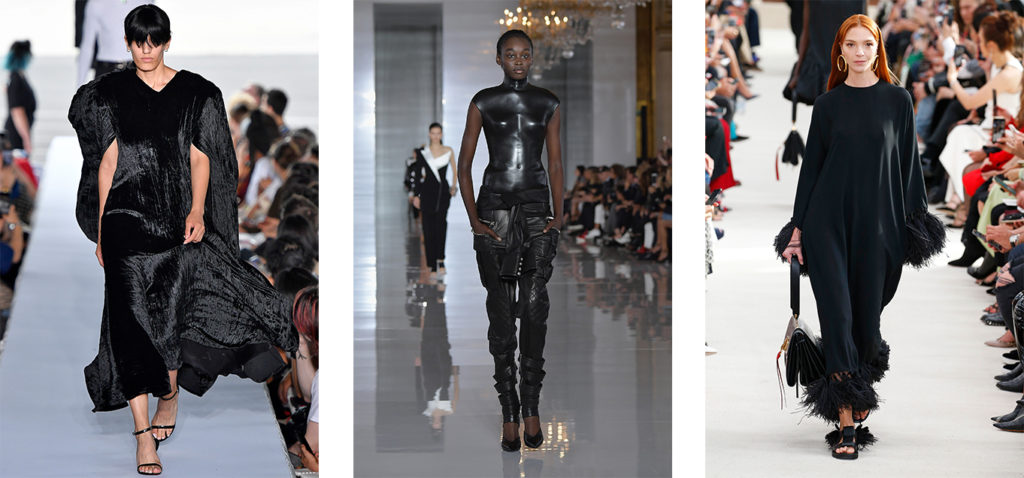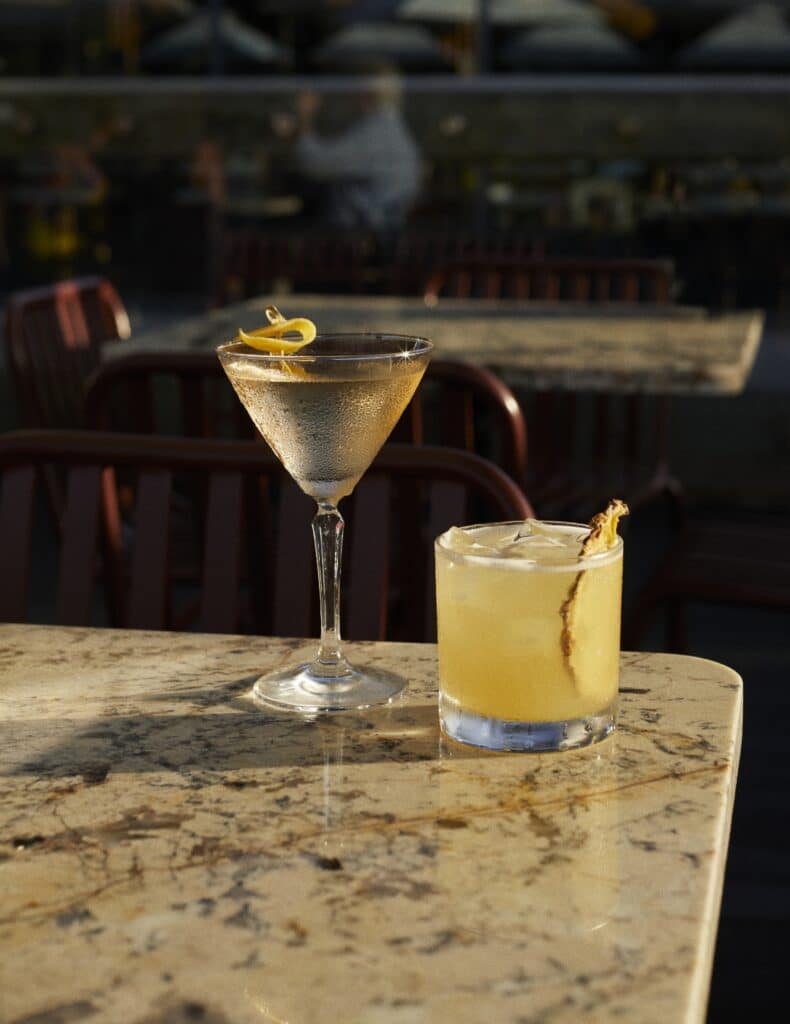
Valentino Spring 2019.
Black is the colour of rebellion, religion, sex appeal and sophistication – in what guise does it appear this season?
This is the part where I tell you black is back. But fashion’s favourite fixation, which Coco Chanel said “has it all” and Christian Dior declared could be “worn for any occasion”, never really gets pushed to the back of our wardrobes, does it?
Black fits all our fashion requirements, whether we need to come across as smart and reliable in a job interview, sophisticated at a cocktail party or a bit mysterious on a first date. Given it isn’t exactly a colour – it’s the absence of light or the absorption of all colours – it’s a catch-all clothing choice. All it requires is context.
Black has been loaded with symbolism since forever. In the beginning, there was darkness, say several creation stories. While the ‘colour’ is worn in many religions as a sign of humility, its shapeshifting ability means it has taken on many more meanings throughout the course of history.
In the Victorian era, the Queen mourned her prince for 40 years and ordained black dress the only acceptable way to grieve.
An expensive colour to come across in New Zealand, at least it could also signal how one’s move to the other side of the world had paid off financially.
Black’s next major moment was in 1926, when fashion oracle Coco promoted her first Little Black Dress. In a shade usually reserved for shop girls, it boldly did away with old-school class assumptions.
Around this time, a little-known rugby team called the All Blacks became a source of national pride. New Zealand’s affinity with black has been attributed to our love of team sports, our brooding landscapes and simply our willingness to fit in and ‘get on with it’.

But when Karen Walker, World, NomD and Zambesi first took our fashion to the world, showing at London Fashion Week in 1999, their use of the colour was a sign of our local industry’s dark and intellectual nature.
“Black, black, black. They love it,” said fashion critic Lisa Armstrong’s review of New Zealand Fashion Week for the UK Times in 2004.
For Zambesi co-founder Elisabeth Findlay, enigmatic black still holds a strange power.
“There is a quiet confidence in black,” she says. “I never tire of it and it endures. It has a way of being neutral. It transcends age, gender, class, and lifestyle.”
The blankest of canvases, a black outfit never outshines the wearer but puts the focus back on them. The same goes for the designer’s details, with deep black urging us to lean in to appreciate a garment’s cut and texture.
“I sometimes like to make prototypes in black, as you can focus on the details without the visual interruption of bold colour or print,” says Sara Munro of Company of Strangers. “I like black because it doesn’t mess around.”
Although some local fashion designers have tried to free themselves from our well-worn obsession, it’s hard to deny the pulling power of black.
Twenty-seven Names designers Rachel Easting and Anjali Burnett have long used navy as an alternative base colour to set themselves apart, but this season, Rachel admits, “It just felt right to include some black. We’re constantly changing in the fashion industry, and when you’ve had a break from black for 10 years, it feels nice and refreshing to go back to it.” Plus, she adds, “every retailer loves being able to say: ‘We also have it in black’”.
For Jarrad Godman, who sent a slew of strong black dresses down the runway at New Zealand Fashion Week, it provides an antidote to fashion’s frivolity.
“Internationally there has been a huge ‘more is more’ trend, where clothing and accessories have become bright, heavily embellished and purposefully garish, so I think it’s only natural that there’s a reaction where people are dressing in darker colours as a way to distance themselves from trend-based fashion.”
Black has always been embraced by avant-garde Japanese designers Yohji Yamamoto and Rei Kawakubo of Comme des Garçons, as well as Belgium’s Antwerp Six, including Dries van Noten, and it seems the rest of the world is now trying it on.
According to industry trend-watcher Editd, the number of black womenswear garments arriving in stores across America from July to September 2018 increased 64 percent on the year before.
Balenciaga, Vetements, Balmain, Alexander McQueen and Valentino all showed unseasonably dark Spring/Summer collections, with armour-like leather and ’90s grunge references styled with a sense of hard-won purpose.
In the form of oversized coats and billowing dresses, and sometimes worn in striking contrast to white, the new black is anything but basic. The possibility it brings to our wardrobe is vast and should never be overlooked.
Just ask Margarita Robertson of NomD. “Even though many customers may buy a colour or print option, they’re usually back for a black version as well,” she says. “I love the fact that it can be as hardcore as punk or as feminine as a little black dress, and represent mourning or celebration. It’s universal, genderless and just simply cool. Long live black.”










